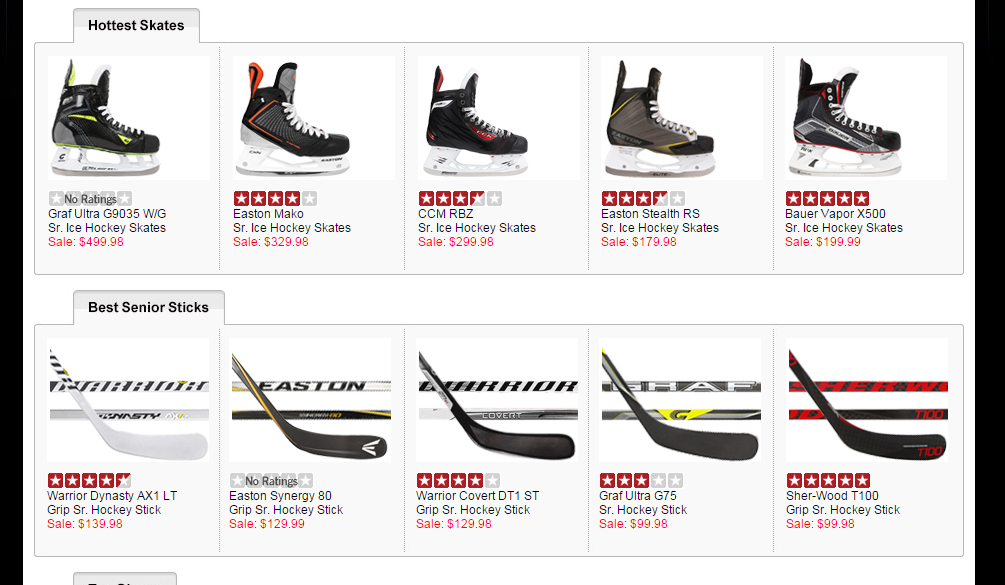
Aside from small “changes in technology,” hockey sticks remain undifferentiated at face value, with little besides from stick graphics that separates each respective stick. (Willful Caboose)
by: Tyler Chiu
10/18/2015
For the past half-decade, leading ice hockey equipment manufacturers such as Bauer Hockey, Reebok-CCM, Easton, Sherwood, Graf and Warrior have charged susceptible consumers ludicrous premiums for their respective products and services. Eager and equally as delusional parents expend upwards of $1500 annually on his or her child’s hockey equipment, notwithstanding the knowledge of the blatant fact that costly equipment will neither bolster his or her child to stardom, let alone enable the child to reach the National Hockey League. Led by industry-powerhouse Bauer’s reporting of growing revenues of over $112.9 million (Q4 2014) from a $86.7 million figure (Q4 2013), firms across the board continue to reap the profits from a select group of wealthy consumers. In recent times, nevertheless, the supposition that hockey has become an exclusive and elitist sport has become undoubtedly true, with enrollment at youth levels dwindling at an alarming rate.

Points of differentiation are non-existent between the individual lower end products that each companies provides. On the behemoth hockey equipment retailer’s website hockeymonkey.com, it is unmistakable that a multitude of firms have yet to differentiate their respective products, leading firms to drastically cut respective prices. Failure to differentiate in the long-term will lead to an inability to charge greater premiums than competitors, thereby decreasing profit margins and making survival difficult. (Hockey Monkey)
Although the hockey equipment industry continues to demonstrate healthy growth and hints at alleged sustainability, the growing competition between firms in a crowded market to harness the financial capital of a consumer’s wallet will lead to the intensification of rivalry and an eventual industry shakeout. Alongside the overabundance of undifferentiated products available and the emergence of professional teams re-selling pro-grade used equipment, the growth of the hockey equipment industry will unequivocally come to a halt without any substantial growth of the youth hockey population. According to Porter and his five forces model that serve as analysis for an industry, the industry shakeout that will result from sluggish demand growth will leave all but two or three firms standing from the original big six firms. The firm that will be the most capable in creating new-found points of differences will ensure its long-term survival in this cut-throat industry. Alas, time will inexorably dictate the result.